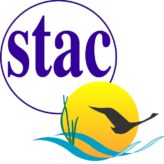Oysters Show Resistance
For nearly seven decades, wild oyster (Crassostrea virginica) populations in the Chesapeake Bay have languished at the mercy of two marine parasites. The rugged looking oyster proved to be not so hardy when infected by either Haplosporidium nelsoni, responsible for MSX, or Perkinsus marinus (aka Dermo for its original classification as Dermocystidium marinum). Both are single-celled parasites...
Read MoreUMCES Receives EPA Funding
The U.S. Environmental Protection Agency announced today that it is providing an additional $150,000 to the University of Maryland Center for Environmental Science (UMCES) to continue support for managing and improving the computer technology used for Chesapeake Bay restoration. “Clean water is a top priority for EPA,” said EPA Regional Administrator Cosmo Servidio. “This continuing...
Read MorePoplar Island Restoration
Lorie Staver scans the green and golden marsh on a small stretch of land in Chesapeake Bay called Poplar Island. It’s something she has done hundreds of times from her graduate student days to now, as an Assistant Research Scientist for the University of Maryland Center for Environmental Science’s Horn Point Laboratory. Staver is exhaustively monitoring the island, from the dirt below her feet...
Read MoreOpportunities for Collaboration
Opportunities for Future Collaboration NOAA BWET Grant The NOAA Chesapeake Bay Office has announced the FY18 Chesapeake Bay-Watershed Education and Training (B-WET) program funding opportunity. A total of roughly $1,000,000, subject to appropriations, may be available to fund 8-10 new projects. Applications are due by March 9, 2018. Details are available through the full Federal Funding...
Read MoreSTAC News

The Chesapeake Bay Program’s Scientific and Technical Advisory Committee (STAC) is administered by the CRC and funded through a cooperative agreement with the Chesapeake Bay Program (CBP) Partnership – currently spanning the period 2016-2022. The CRC has had a long-standing role of administering all activities of STAC, an active committee with 38 members from academic and scientific...
Read MoreOcean Deoxygenation
CRAB: Collaborative Research around the Bay In the past 50 years, the amount of water in the open ocean without oxygen has increased more than fourfold. In coastal water bodies, including estuaries and seas, low-oxygen sites have increased more than 10-fold since 1950. Scientists expect oxygen to continue dropping even outside these zones as Earth warms. To halt the decline, the world needs to...
Read More![[Old] Chesapeake Research Consortium](https://chesapeake.org/wp-content/uploads/2017/01/LogoForDarkBack.png)
